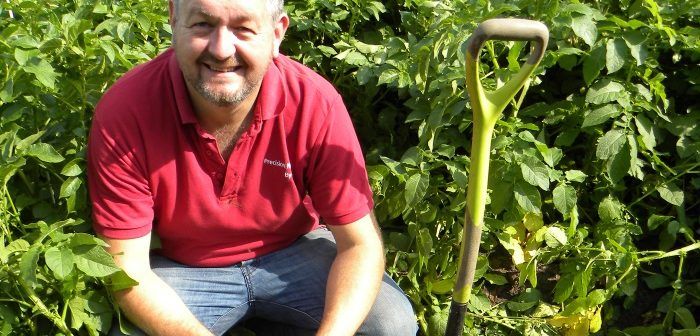Opportunities to improve resource use efficiency and margins in potato production were presented to northern growers at a recent ProCam agronomy evening in Skelmersdale.
Topics included the use of controlled release fertilisers, natural root stimulants and wetting agents, each representing innovative approaches with the potential to improve profitability whilst reducing environmental impact.
Leading the meeting, ProCam County Crops Director John Cairns urged farmers to embrace new technology to keep their businesses moving forward.
“We work in a challenging and constantly changing industry, and it is necessary to stay abreast of the latest thinking if farmers are going to keep their businesses competitive,” he said. “Where innovation is backed with sound trial data and is appropriate for the crop, our advice is to try it out on a small acreage, comparing it with your standard approach. Monitoring performance in your own situation is usually the best way to see what works and what doesn’t.”
Controlled release fertilisers already successfully used in smaller-scale horticultural cropping have a place in larger-scale agriculture, according to Scott Garnett of ICL Fertilisers. Speaking at the meeting, he presented data showing how the polymer-coating of nutrients allowed supply to be more accurately matched to plant demand, compared with conventional approaches, with the result being greater resource use efficiency and higher marketable yields of potatoes.
“The controlled release technology we have developed for the product Agromaster means nutrients are available when the plant needs them,” he explained. “In the case of potatoes, this means just one fertiliser application, reducing trafficking compared with conventional fertiliser applications, and significantly better use of nutrients. In trials, we have shown that the use of controlled release fertiliser can reduce nitrate leaching by 55% when compared with conventional fertiliser applications. In other trials, a single application of Agromaster controlled release fertiliser resulted in 24% higher marketable yield of ware potatoes when compared with the same level of nutrient input delivered as two liquid applications.”
Another topic new to many potato growers was root growth stimulation through the application of beneficial bacteria, a technology that has been shown in widespread UK trials to boost establishment and improve the use of nutrients.
“Establishment is a key period as the young plants have insufficiently developed root systems,” explained Scott Garnett. “Introducing symbiotic root-dwelling bacteria at this critical stage is a very effective way to solubilise phosphorus and promote the bioavailability of other plant nutrients in the soil.
“In UK trials on the product RiseP, which can be applied to the soil in conjunction with a range of agrochemicals, marketable tuber yield was shown to be increased by up to 10%.”
The use of surfactants as soil wetting agents was also discussed at the Skelmersdale meeting, with the potential for a 25% reduction in water use in potatoes through improved soil penetration being highlighted.
“New technology that allows more efficient use of resources, whether this is nitrogen, phosphates or water, has to be high on the agenda for progressive potato growers,” said John Cairns in conclusion. “It’s relevant first and foremost in terms of making businesses more competitive, but it is also important for processors, supermarkets and consumers.
“Our approach at ProCam is to support growers in adopting new technology, to ensure they make the right decisions at the right time for their businesses.”
The picture shows ICL’s Scott Garnett who highlighted trials to demonstrate the effectiveness of modern technologies in improving marketable yield of potatoes




